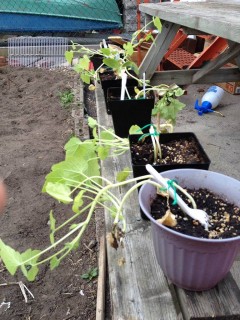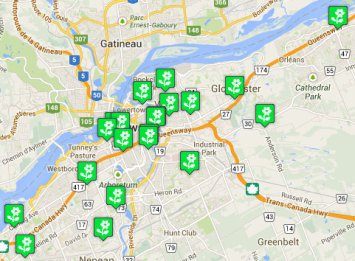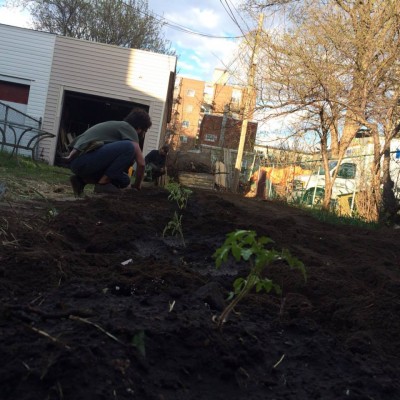by Omar Elsharkawy, CFICE Admin RA
Summer is almost upon us. Time to stop worrying about shovelling your driveway and start thinking about gardening. What better way to start gardening than by joining (or starting your own) community garden with your neighbors and fellow community members?
For those who don’t know, community gardens are pieces of land gardened collectively by community members. People participate in community gardening for a variety of reasons. For example, some do so to improve their food security by increasing their access to sustainable and diverse food sources; others choose to garden as a more affordable way to get fresh vegetables; and some are motivated by the idea of contributing to environmental sustainability. With community gardening, you can help yourself, your community, and the earth in so many ways.
First, by joining a community garden you’re contributing to increasing your own food security. Food insecurity is the state of being without reliable access to a sufficient quantity of affordable, nutritious food. By participating in community gardening, you are helping to ensure you have access to fresh, affordable vegetables (and fruits!) throughout the summer. You are also contributing to community food sovereignty. One of the goals of food sovereignty is making sure people can choose what to eat while being less dependent on remote and unaccountable food corporations. By growing your own food, you’re by-passing corporate involvement in the foods you are choosing to plant and eat. Through community gardening you can contribute to increasing your community’s food security as well. Often community gardens have a policy that a certain quota of harvested food must be donated to the local food bank. This policy increases a food bank’s capacity to provide fresh, healthy food to people in need.
In addition to increasing food security, growing your own food will help you save money, which can be especially beneficial for those of us struggling to make ends meet (students, I’m talking to you!). Community gardening is relatively inexpensive compared with buying fully-grown produce at the grocery store. All you need are some seeds, soil, and a plot and you’ll have enough of whatever fruits and vegetables you choose to grow for at least three months this year. You can even go further by canning your produce in order to enjoy the fruits of your labour during the winter.
For unemployed youth, community gardening can be a good way to fill the long summer days with meaningful work that can demonstrate to future employers your dedication and ability to take initiative. Think about it: If you plan, plant, cultivate, and harvest your own plot, you’re learning how to budget for, design, and complete a project from beginning to end. These are essential project management skills that can be transferred to other employment-related tasks.
Community gardening also provides an excellent opportunity to learn about food and farming. In a time when the number of farmers in Canada is decreasing, this is a valuable skill to learn. Growing one’s own food also teaches people to appreciate food more, because it shows the amount of hard work that goes into producing food. Knowing the labour costs of food production can help lead to a cultural shift when dealing with food waste.
By participating in community gardening, you’ll be directly, and inadvertently, contributing to environmental sustainability. Fewer trips to the grocery store equates to fewer gas miles, and relying on locally-grown produce can really put a dent in the amount of miles needed for transporting imported food. In 2014, Canada imported around $39,445 million (CDN) worth of food, and all that food equates to food miles. For example, tomatoes imported from Mexico have to travel approximately 2,241 miles (3606km) to get to Canada, which results in hundreds of kilograms of carbon being released into the atmosphere. These food miles could potentially be cut by using community gardens to grow imported foods locally. As an added bonus, urban community gardens provide pollinators, like bees, with access to larger and more bountiful habitats. For anyone who has been following the bee crisis recently, you know that bees are essential participants in successful food production. Without them we wouldn’t have access to foods such as apples, tomatoes and several other foods we enjoy on a daily basis.
Finally, community gardening opens avenues for community engagement. It’s a great opportunity to meet new people and strengthen relations in the community. The relationships that get built can lead to conversations about other issues facing the community and can create opportunities for collaboration between community members to solve these issues collectively.
So what are you waiting for? Get out there and sign up for a community garden plot today!
This piece is part of CFICE’s 4-part series on community gardening.
Resources:
‘Buy Local’ Ottawa interactive guide, which includes a listing of community gardens: http://justfood.ca/buylocal/


